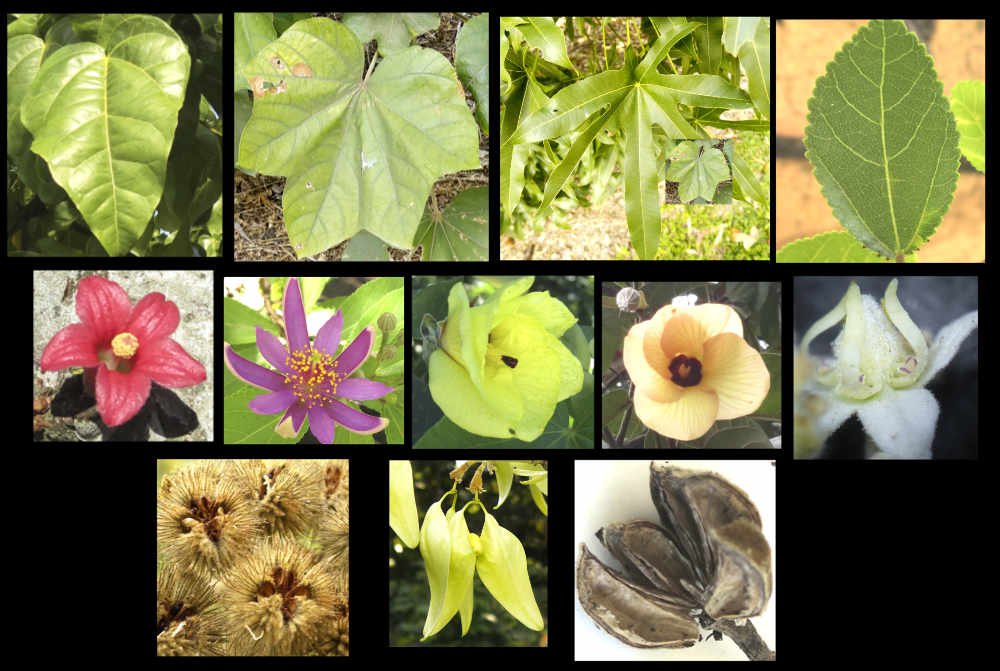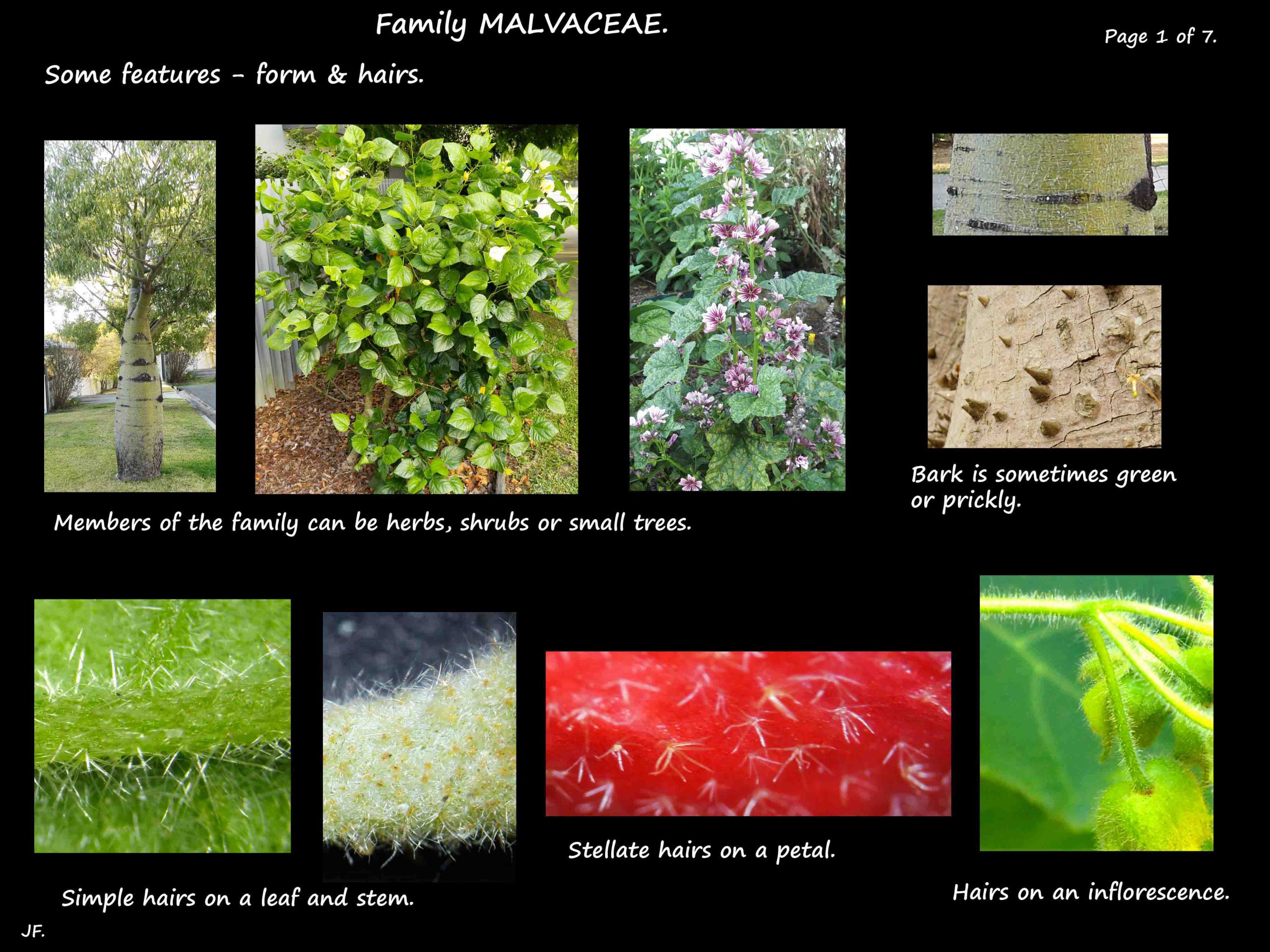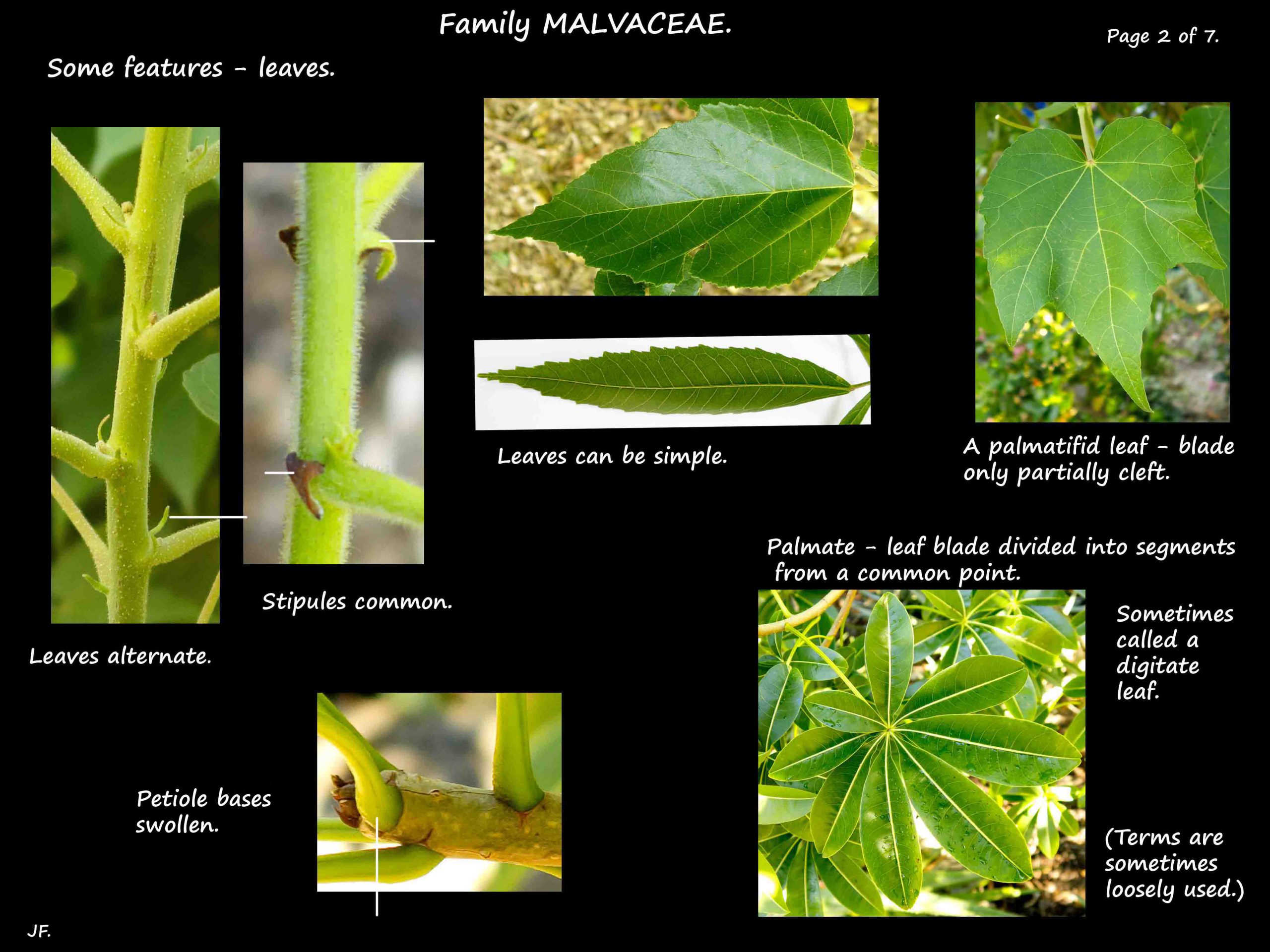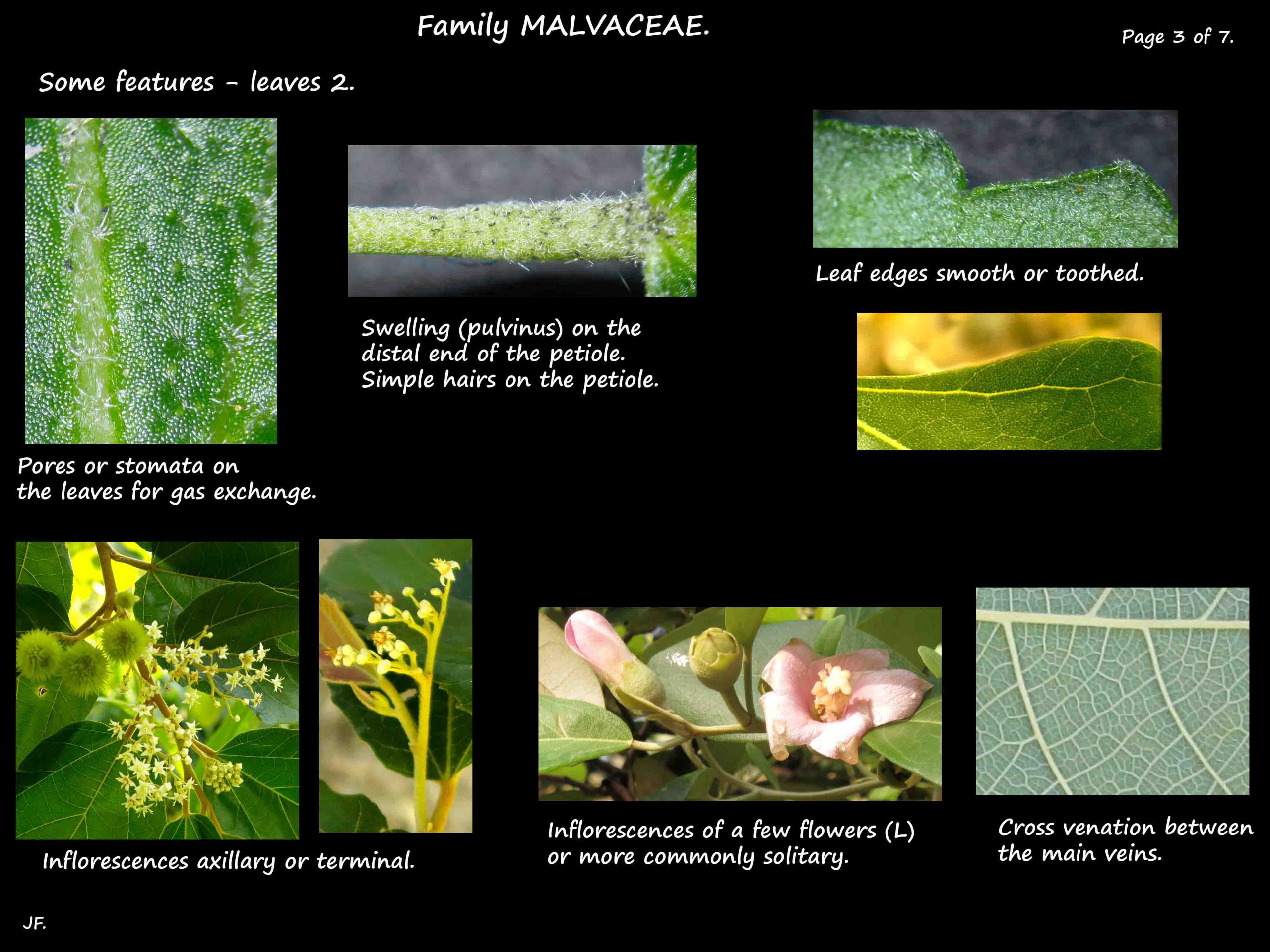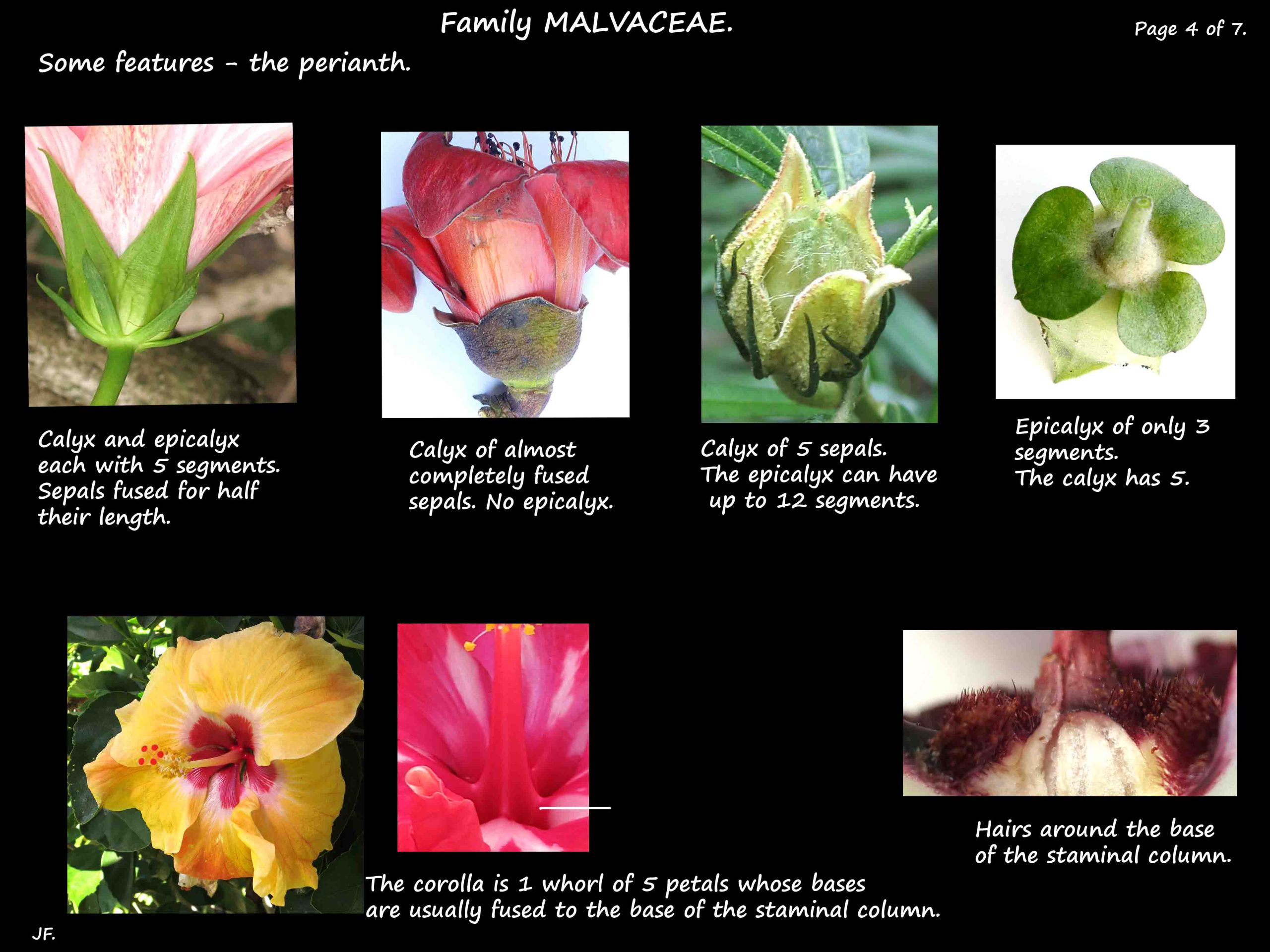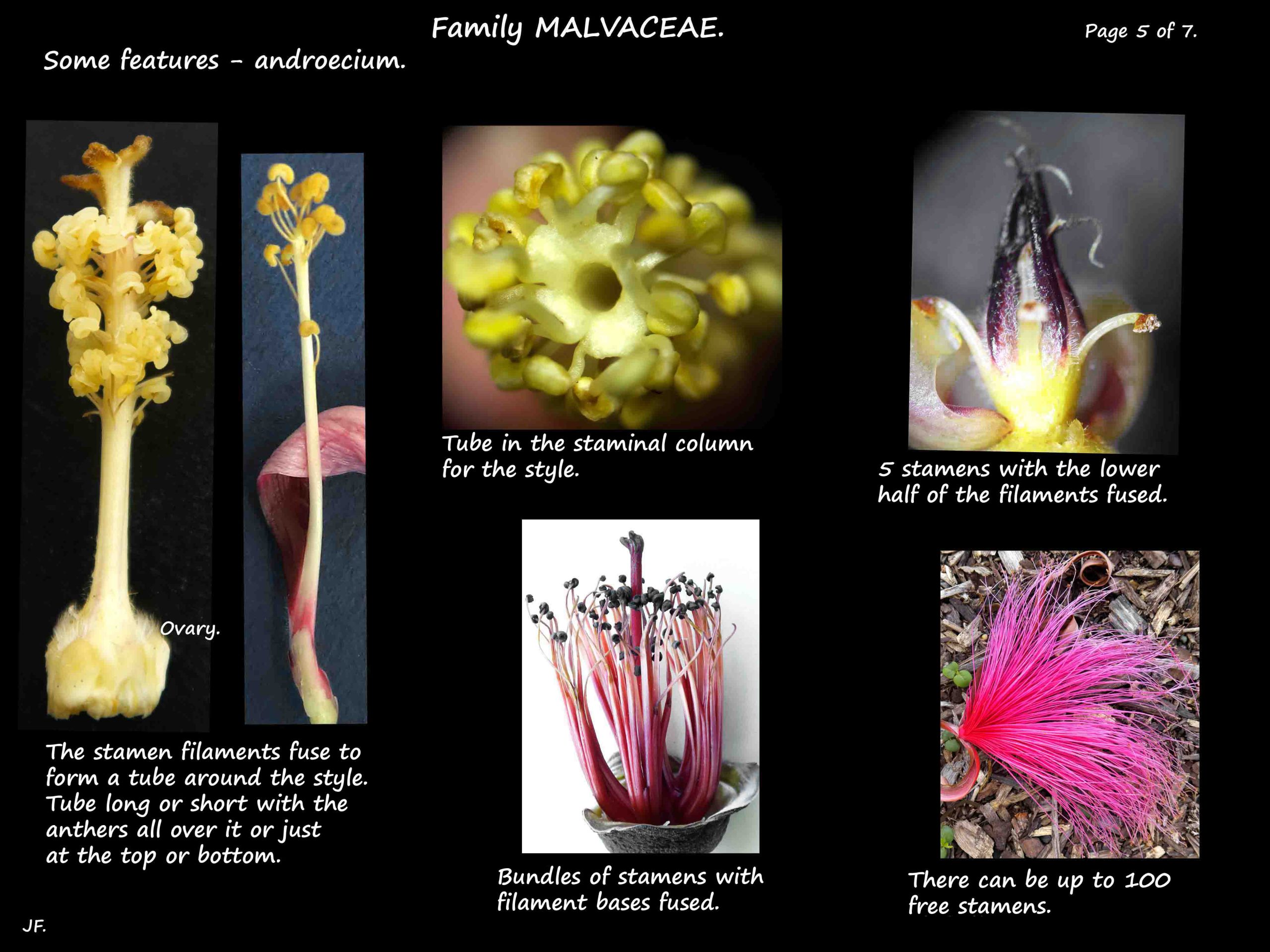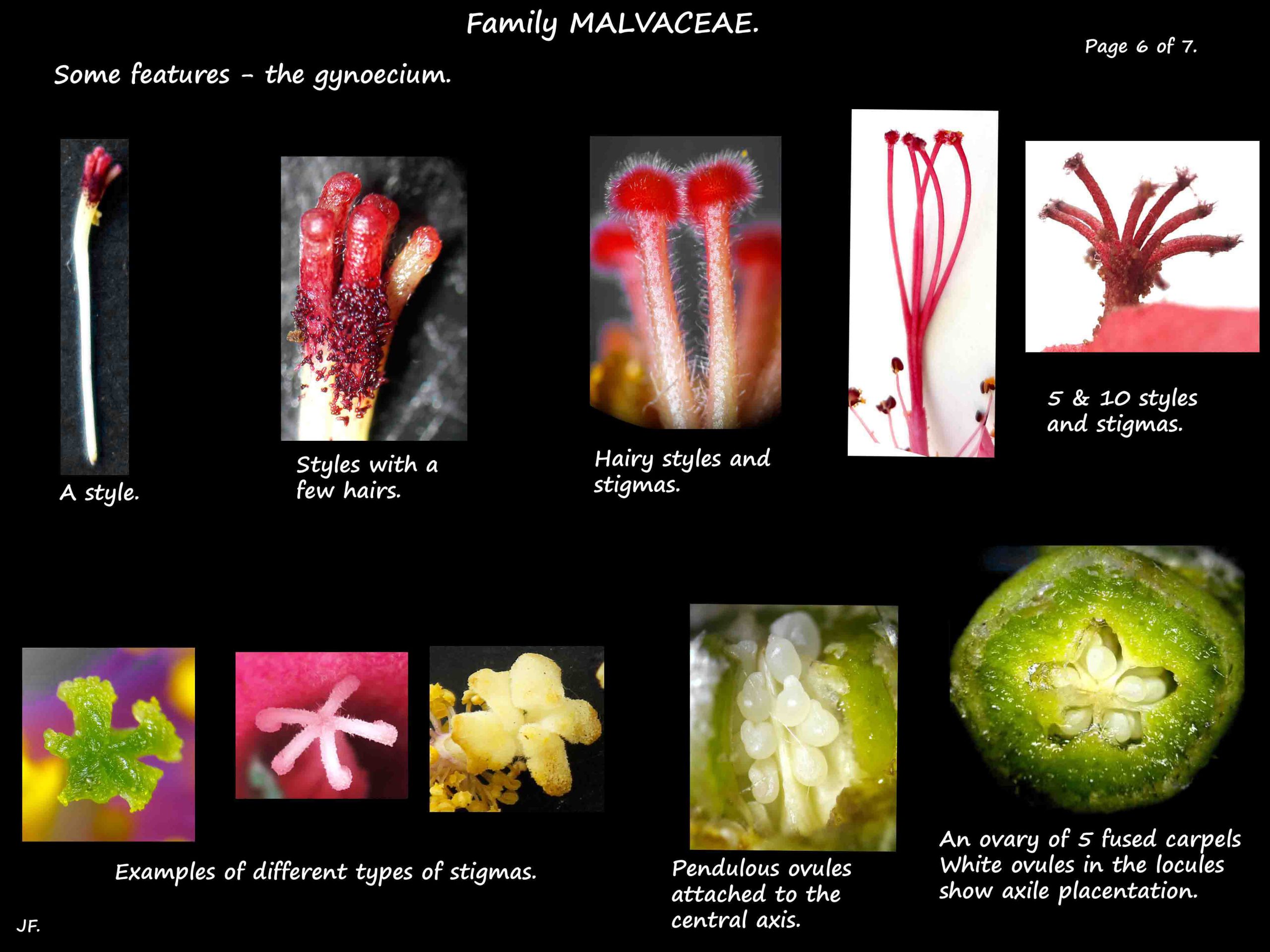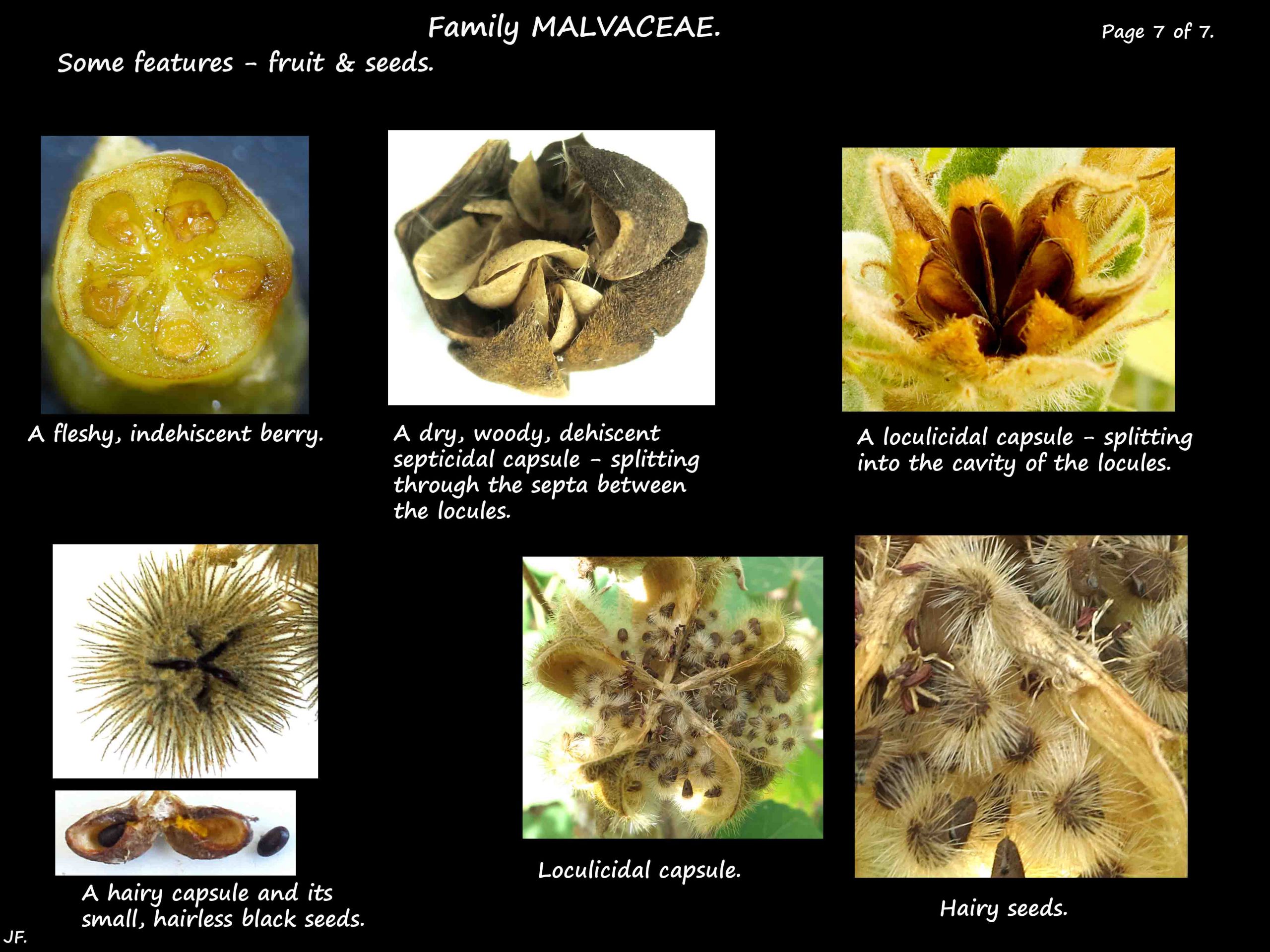Malvaceae.
Depending on how loosely or strictly the family is defined there are from 1000 to over 5000
species in 85 to 250 genera.
They are shrubs and herbs with a few small trees.
They have various kinds of hairs including stellate and peltate.
Leaves are alternate, either spirally arranged or in 2 ranks.
They have petioles usually with a swelling at the base or both ends.
They usually have 2 leaf-like stipules.
Blades can be entire, palmately or sometimes digitately divided.
Leaf edges can be toothed.
Veins are palmate or pinnate with cross veins.
Stomata (pores) are on both surfaces.
Inflorescences are usually axillary, less often terminal spikes or on the trunk or branches.
The mostly bi-sexual flowers are solitary or in small clusters.
The funnel-shaped flowers range from large to small.
There is often an epicalyx of 3 to 12 sepal-like segments at the base of the calyx.
The calyx has 3 to 5 segments, separate or with their bases joined.
Glandular hairs (nectaries) are normally present on the inside of the sepal bases or elsewhere.
There is 1 whorl of 5 (3-4) petals which are often slightly asymmetric.
Their bases are usually fused to the bottom of the staminal column.
Petals can be twisted or bent, overlap like tiles and their bases are sometimes clawed.
Up to 100 stamens whose filaments may fuse to form a staminal tube around the style.
The top of the column sometimes has petal-like lobes or teeth.
Alternatively there are 5 to 15 bundles of stamens whose filaments branch.
The anthers open via longitudinal slits directed towards the centre of the flower (introrse).
Staminodes (sterile, often petal-like stamens) are frequently present.
The ovary is superior and usually consists of 5 (1-20 or 100) fused or partly fused carpels.
The locules are occasionally divided by ‘false septa’.
There are up to 50 ovules in each locule with placentation usually being axile.
There are typically 5 styles (1 to many) but these can branch to give 10.
They are often hollow and can be free or partly joined.
There are 5 or 10 stigmas free or stuck together but not fused.
Fruit can take numerous forms:
- a capsule, membranous or woody; dehiscent, loculicidal or septicidal.
- a schizocarp of 5 (1 to many) mericarps that are follicles or nutlets.
- a berry occasionally – fleshy and indehiscent.
- a samara rarely – dry, indehiscent winged fruit from 1 carpel.
(A schizocarp is a dry, indehiscent fruit that splits into 1 seeded segments (carpels).
A mericarp is a section of a schizocarp.)
Seeds may or may not have hairs.
Malvaceae subfamilies.
The Malvaceae family can be divided into subfamilies and differences arise over what
should be included and the relationships are not settled.
1. Bombacoideae.
These are trees, often with bottle-shaped trunks or herbs.
They often have green bark and some have spines.
Leaves usually palmately divided with small stipules.
Often an epicalyx and the five sepals are fused at the base.
The 5 petals are free and there is a staminal tube.
There are 25 carpels and the style is branched.
Fruit usually a hairy capsule.
Examples are Adansonia, Bombax, Ceiba and Lagunaria.
2. Brownlowioideae.
Trees or occasionally shrubs.
Flowers have no epicalyx and the calyx is bell or urn-shaped with 2 or 3 lobes.
The approximately 30 stamens are free or in bundles but not a tube.
Usually only 1 or 2 carpels but sometimes 6.
Brownlowia is an example.
3. Byttnerioideae.
Most are small shrubs but a few trees and herbs.
Leaves, in 2 ranks or spirally arranged, are simple (1 genus not) and stipules are present.
Usually no epicalyx.
The petals are variable – wide base or clawed, the top hooded or split etc.
Only 5 or 10 stamens that are free or in a few groups with the bases fused.
Staminodes usually present and petal-like.
Styles are sometimes branched.
Fruits mostly a berry or capsule.
It is divided into 4 tribes.
- Theobromateae e.g. Theobroma.
- Byttnerieae e.g. Byttneria.
- Lasiopetaleae e.g. Commersonia.
- Hermannieae.
4. Dombeyoideae.
Leaves are spirally arranged.
There is an epicalyx and the sepals can be free or fused at the base.
Stamens can form a short tube.
Usually 5 carpels (2-10), and a branched style.
The withered petals remain on the fruit.
Seeds are winged.
Dombeya is the best know example.
5. Grewioideae.
Usually no epicalyx.
Inflorescences are opposite the leaf bases.
The white or yellow petals usually have clawed bases with nectaries on them.
Stamens usually free but sometimes in bundles.
Staminodes present.
There are 2 to 10 carpels.
Fruit is fleshy or a capsule and usually with spines.
The seeds are winged.
Grewia is an example.
6. Helicteroideae.
Most are trees but a few shrubs.
The leaf stalks have swollen bases.
Sepals are fused to form a tube.
The bases of the petals are clawed.
The stamens form a short tube or bundles.
Seeds are winged.
7. Malvoideae.
A large group of herbs, shrubs and trees.
Epicalyx and stipules are usually present.
There are 5 sepals with their lower 1/3 fused.
The bases of the 5 petals are fused to the staminal tube.
The top of the tube often has 5 teeth.
Few to many carpels often with separate styles and hairy stigmas.
Fruit is usually a schizocarp and the seeds are hairy.
It is divided into 3 Tribes.
- Hibisceae with fruits a schizocarp e.g. Hibiscus and Pavonia.
- Gossypieae are trees or shrubs including Gossypium and Thespesia.
- Malveae including Abutilon, Alcea, Althaea, Callianthe and Malva.
8. Sterculioideae.
These are trees such as Brachychiton and Sterculia.
The often palmate leaves are spirally arranged.
There is no epicalyx.
There are no petals but the sepals resemble petals.
Inflorescences are axillary and flowers are usually unisexual.
Male flowers have fused stamen filaments and no staminodes.
There are nectiferous hairs at the base of the tube.
Female flowers usually have free carpels.
Fruit is a follicle.
Tillioideae.
Some also include this subfmily.
These are trees in the Linden family with leaves in 2 ranks.
There are still several genera not yet placed in any of the above and these are grouped
under the heading of inertia sedis (place uncertain).
J.F.
